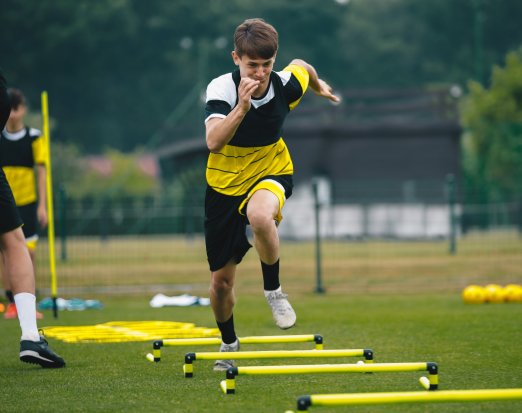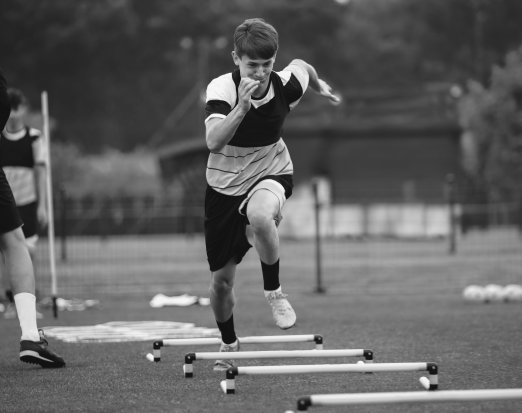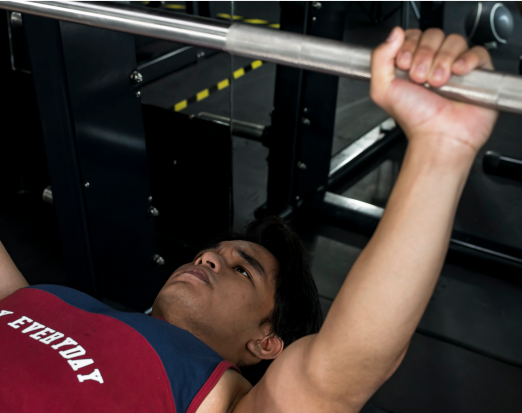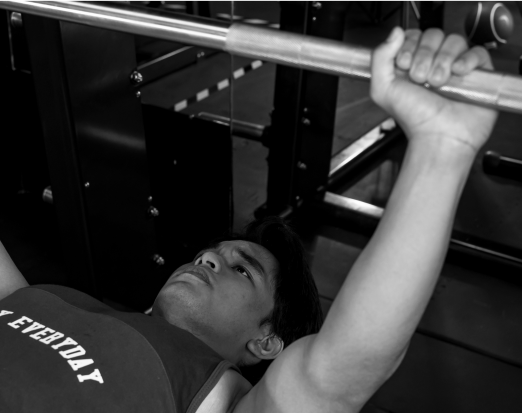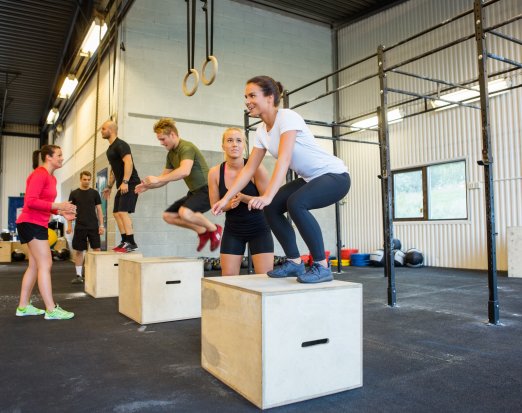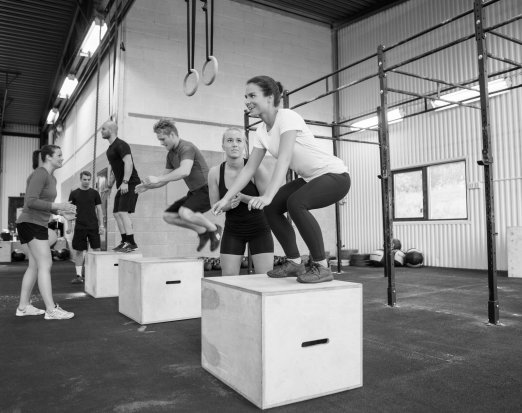Is There a Relationship Between Core Stability and Athletic Performance?
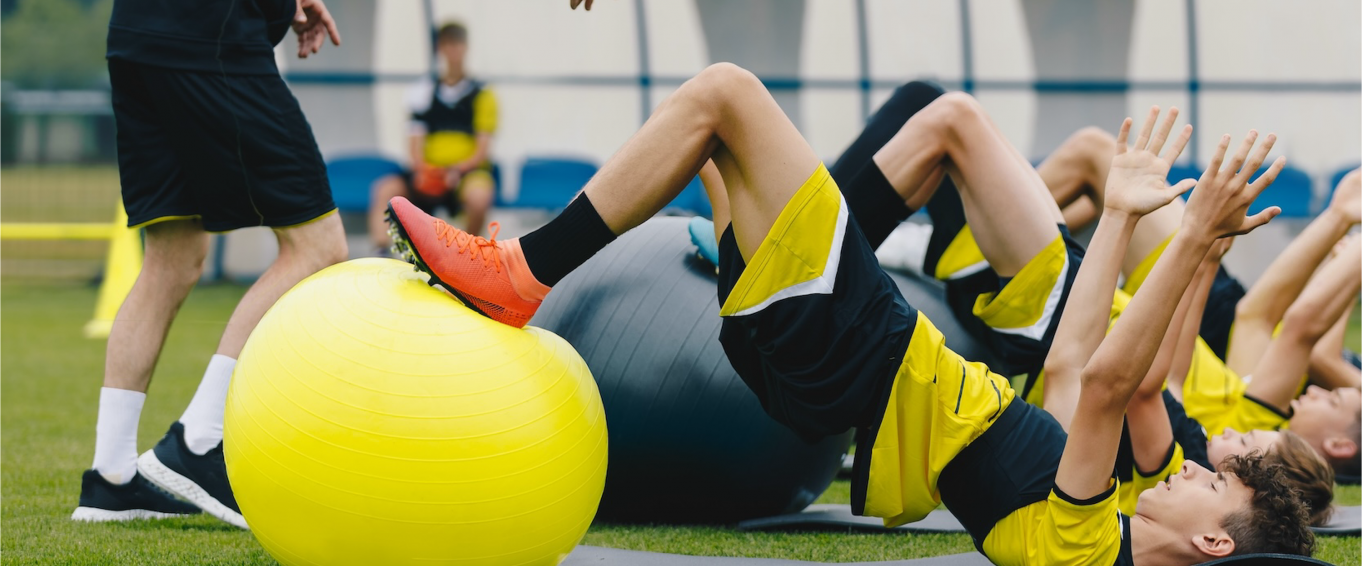
The terms core stability, core strength, core endurance, or even functional training are frequently used within the health and fitness industry, and now more common within the strength and conditioning community. The belief is, by developing the core, and thus improving stability or core strength, this special mode of training will protect the athlete from injury, especially low back pain, and improve athletic or sport performance.
From the above claims, core stability would be an ideal training modality, as all coaches want their athletes to be prepared for their sport (sport readiness) – hopefully leading towards high performance, with the bonus of reducing the risk of injury. We are fully aware of the high injury rates in sport, with most injuries being classified as overuse or sport-related – you can read more about youth sport injuries here. Therefore, let’s explore the relationship between core stability and athletic performance.
To start, there is a challenge with the terms core and stability. Both are difficult, if not, impossible to define. Let me try to explain. Core training started to pick up speed in the 1990’s from the work of Hodges and Richardson with studies on treating low back pain (7). This led to a belief that individuals suffering with chronic low back pain had some sort of timing issue when recruiting muscles in the torso, in other words, there was a delay in the recruitment of specific muscles from the central nervous system. This further led to the idea that certain exercises could re-programme how specific muscles are recruited, for example, the transverse abdominis, obliques, and lower abdominals, and by recorrecting the recruitment pattern, this would better stabilise the spine. (I also think that this idea moved into other areas of the body, example, gluteal activation, psoas activation, and so on).
The challenge with this thinking is that we are assuming that the body has one set or a correct way to activate muscles. This idea may have some merit if the goal, task, and environment were consistent (never changed or altered), as having one recruitment pattern may be optimal. However, as goals, tasks, and the environment are constantly changing, for example, lifting, pushing, running, sprinting, jumping, landing etc…the system (body-systems) needs to be dynamic, meaning that the system is constantly being updated so that it can cope with the demands – everyday movement, when training, and when competing in sport.
We know that pain changes motor control, for example individuals suffering with low back pain (19), and interestingly enough, individuals living with low back pain tend to have a higher recruitment of the torso muscles (possibly to make the spine more stable) (18) – so attempting to make the spine more stable simply through muscle recruitment or through a greater muscle recruitment doesn’t seem to work. Furthermore, it would be an assumption, to believe that the recruitment of muscles can be retained (meaning that an individual has the neural plasticity to turn muscles on and off in the correct order, considering that we know the correct order). Moreover, even if they could re-programme the muscle recruitment, how many exercises would the individual need to perform? Would this be one, two, three, or four? And from preforming these exercises are we confident that they will transfer to a sporting environment.
So, the idea of correcting the recruitment of muscles (through an exercise) with the hope of reprogramming the system maybe flawed, additionally, we also want to build a dynamic system, which can adapt to the task and environment rather than just a constant stable system. As you can see core stability is challenging to define. Moving onto the muscles that make up the core, this is also ambiguous, and it depends on the author or researcher, for example, authors include the muscles of the trunk and pelvis (17), where others include the trunk and lower limbs joints – hips and knees (4), and muscles of the pelvis and shoulder (5). Focusing on the torso muscles, Bergmark (2), suggested that the core muscles of the trunk should be categorised as local and global musculature.
Local muscles have attachments to the lumbar spine and potentially influence segmental motion. Conversely, global muscles are superficial and aid in gross movements. The main idea here was that if a muscle imbalance appeared, between the local and global musculature, the spine (and system) would become unstable, leading to injury. Panjabi (13), however, suggested that stability was achieved through a feedback loop through the passive structures, active structures, and the nervous system (neural control).
Again, the idea that the torso muscles can be subdivided or categorised from a location or position is fine, however, we must tread carefully with the assumption concerning a muscle imbalance, and how the nervous recruits the muscles relative to a specific task or goal, and within a particular environment. Perhaps, the stability model suggested by Panjabi (13), has more merit, as the model allows the system to be fluid (dynamic) and adapt to the environment. To emphasise this point, a study was completed where the individuals actually focused on trunk activation to bypass the natural muscle recruitment when externally loaded. The results of the study reported that the system generates stability via co-activation (bracing) of the musculature relative to the load. Adding to that co-activation via conscious effort may be risky and decrease the stability of the spine (3).
So, as you can see that definitions of core and stability are extremely challenging. The word core seems to mean different things to different people, coaches, and trainers. Stability, both in the spine and the system, does not mean that a greater muscle recruitment of the torso muscles is more beneficial. Additionally, trying to bypass the natural co-activation strategy (motor control) also is not beneficial and potentially risky. Finally, it is uncertain that training static strategies will transfer to dynamic tasks. Clearly stability (co-activation) is completely context driven – relative to the task, goal, and environment.
Testing of Core Stability & Athletic Performance
Hopefully you can start to see that there are clear challenges in defining core and stability. This confusion also bleeds into the testing of core stability. For example, as the torso muscles, especially the abdominals, take centre stage in core training, tests have been proposed to test their strength and or endurance. An example of a core stability assessment is the double leg lowering test. In this test the athletes lie down face up. Typically, they place a blood-pressure device under their lower spine, as this can detect changes in the pelvis (anterior tilt). The aim of the test is for the athlete to lower their legs from 90 degrees (hip flexion) towards the floor, whilst maintaining a specific amount of pressure on the blood-pressure cuff (under the athlete’s lower back). If the athlete can lower their legs closer to the floor, whilst maintaining pressure in the blood-pressure cuff, this would indicate a better/high core stability score. Other simpler tests have also been used including, back extensions, variations of planks, full plank, and side planks.
When trying to correlate core stability, through testing the core of athletes and comparing that with other athletic performance tests – sprint, agility, strength, and vertical jump, many of the studies show no correlation or weak correlation at best (8, 11, 12, 14, 15, 16). Furthermore, as the correlations are weak the authors of the studies tend to state that core stability training should not be a priority in athletic development. This inconsistency may be explained to how we are testing core stability, but this is understandable due to the complexity of the challenge. Until we find a consistent or gold standard method to test core stability, I think the correlation between core stability and athletic performances will remain low to weak.
What About Training the Core and Athletic Performance?
Core stability is a great idea, but at the moment lacks practical evidence to show that it consistently aids in athletic performances. But what about training the core? Let’s review some of the core training methods. The range of core stability exercises are wide, including isometric type exercises (variations of the plank), motor control-type exercises (bird-dog, lower abdominal control), to balance and unstable surface-type exercises (bosu balls and swiss balls).
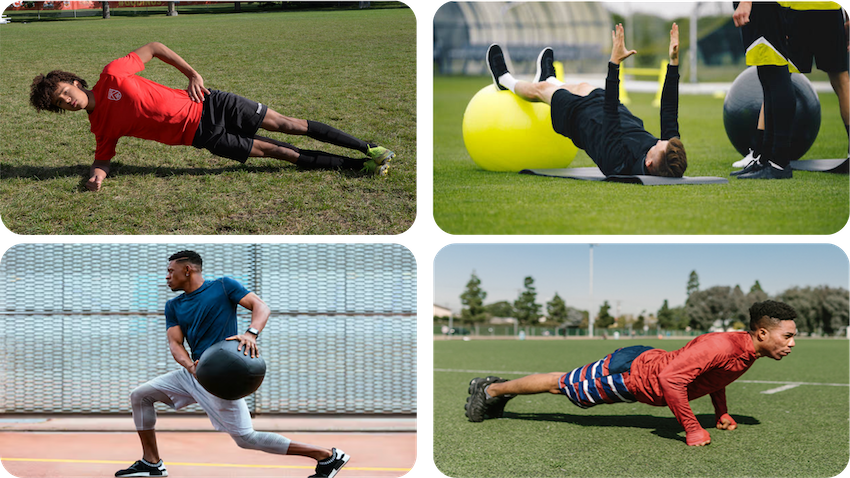
Isometric-type exercises, for example, planks, side-planks, and back extension holds are just isometric exercises – and with regular adherence the athlete will adapt to the demand. The level of intensity needs to be considered, as bodyweight holds will be low, and unlikely to drive long-term strength responses (10). Furthermore, remember that the system will self-select a motor strategy (co-activation) relative to that specific task. Training a stable spine in an isometric exercise, for example, the plank, it is again unlikely to transfer to dynamic situations or environments.
Motor control type exercises potentially have a place with individuals suffering from low back pain, as the movements are generally slow and can be controlled. But, regarding athletic performance, we want our athletes to focus on external cues and react to the ever-changing environment. Again, remember that the system will self-select a strategy (motor control), regarding spinal stability, through feedback from the nervous system. The nervous system will fine tune the muscles (co-activation) to find the optimal level of stability. Furthermore, we also know that individuals learning a new motor skill, the nervous system tends to opt for higher levels of co-activation, with the idea that the co-activation reduces as the skill improves (9).
Balance and unstable surfaces, like training on a swiss ball or bosu ball. In a previous blog we discussed that balance-type training (sensorimotor training) does lead to changes in the nervous system (sensory feedback) resulting in higher rates of force development (6). Therefore, incorporating balance type training into youth programmes has a place, as they might deem the training as fun and engaging. However, as the athletes mature, it is recommended that they focus on developing their relative strength….you can read more on relative strength here.
We know that by training on unstable surfaces the training intensity is compromised, reducing the overall mechanical work (force/load and potentially displacement) (1). Reducing the training intensity is an important consideration, as training intensity is a major component in strength adaptations leading to athletic qualities like relative strength.
So, we are Back to Strength Training with Freeweights
The main benefit from traditional strength exercises (squat, lunges, deadlifts, rows, and presses) is that they can be loaded and therefore place a mechanical stimulus to the neuromuscular system. Furthermore, the exercises use a wide range of movements, and relative to the load, the exercises can also be performed quickly. By exposing athletes to regular strength training using a range of movements, different loads, and speeds, the system will generate a cascade of motor strategies (co-activation) to stabilise the spine (and other joints). Through regular practice the system will fine tune these strategies to reduce co-activation (metabolic cost) and to improve skill.
Summary
Core stability, core endurance, core strength and even functional training are frequently used throughout the sport, fitness, and therapeutic fields with the belief that performing this type of training will aid in athletic performance and reduce the risk of injury (prophylactic helping to reduce the risk of injury). However, regarding athletic performance it seems that the evidence is pointing in a different direction.
The idea that the core, trunk, and back muscles, can be specifically targeted and reprogrammed maybe flawed, as the system seems to self-select a motor control strategy relative to the task, goal, and environment. Additionally, overriding that motor strategy may be risky.
From a long-term athletic development and athletic performance viewpoint, exposing youth athletes to balance type training may be beneficial, as early adaptations are categorised as neurological within the neuromuscular system, and will clearly have some benefits. However, allowing youth athletes to explore strength training with freeweights will help them to learn new skills and pave the way for them to develop their maximal and relative strength – an essential athletic metric and quality.
Long-term adherence to strength training will allow the system to create a cascade of motor strategies (co-activation). Furthermore, the pure elegance of the system is that by prescribing regular strength training to youth athletes, the trunk, torso, or even so-called core muscles are always recruited relative to the task or goal – leading towards a dynamic system that works and performs!
Youth Strength & Conditioning Platform for Schools, Sport Clubs, and Academies.
Our platform helps to deliver effective training and tracks athletic progress and development, with the core objectives of reducing the risk of injuries and to promote both sport readiness and performance. The platform’s features include -
- Strength and conditioning tests and dashboard to monitor and compare athlete metrics
- Athlete app - athletes can discover new exercises and train independently
- Track data - monitor athlete’s training loads, RPE, and training adherence
- Reports - simply create squad, team, and individual athlete reports
- Full curriculum - follow a strength and conditioning curriculum with a library of session plans
References
- Behm, D.G., Muehlbauer, T., Kibele, A., & Granacher, U. (2015). Effects of strength training using unstable surfaces on strength, power, and balance performance across the lifespan: a systematic review and meta-analysis. Sports Medicine, 45, 1645 – 1669.
- Bergmark, A. (1989). Stability of the lumbar spine: a study in mechanical engineering. Acta Orthop Scand Supp, 230 – 51 – 54.
- Brown, S.H., Vera-Garcia, F.J., & McGill, S.M. (2006). Effects of abdominal muscle coactivation on the externally preloaded trunk: variations in motor control and its effect on spine stability. Spine, 31(13), 387 – 393.
- Fig, G. (2005). Strength training for swimmers: Training the core. National Strength & Conditioning Association, 27(2), 40 – 42.
- Gracovetsky S, Farfan HF. & Lamy C. (1981). The mechanism of the lumbar spine. Spine, 6(3):249-262.
- Gruber, M., & Gollhofer, A. (2004). Impact of sensorimotor training on the rate of force development and neural activation. European Journal of Applied Physiology, 92, 98 – 105.
- Hodges, P., & Richardson, C. (1996). Inefficient muscular stabilization of the lumbar spine associated with low back pain: a motor control evaluation of transversus abdominis. Spine, 21(22), 2640 – 2650.
- Hoshikawa, Y., Iida T., Muramatsu, M., Il, N, Nakajima, Y., Chumank, K., & Kanehisa, H. (2013). Effects of stabilisation training on trunk muscularity and physical performances in youth soccer players. Journal of Strength & Conditioning, 27(11), 3142 – 3149.
- Lay, B.S., Sparrow, W.A., Hughes, K.M., & O’Dwyer, N.J. (2002). Practice effects on coordination and control, metabolic energy expenditure, and muscle activation. Human Movement Science, 21(5-6), 807 – 830.
- Lum, D., & Barbosa, T.M. (2019). Brief review: effects of isometric strength training on strength and dynamic performance. International Journal of Sports Medicine, 40(6), 363 – 375.
- Nesser, T.W., Huxel, K.C., Tincher, J.L., & Okada, T. (2008). The relationship between core stability and performance in division 1 football players. Journal of Strength & Conditioning, 22(6), 1750 – 1754.
- Okada, T.M., Huxel, K.C., & Nesser, T.W. (2011). Relationship between core stability, functional movement, and performance. Journal of Strength & Conditioning, 25(1), 252 – 261.
- Panjabi, M.M. (1992). The stabilising system if the spine. Part 1. Function, dysfunction, adaptation, and enhancement. Journal of Spinal Disorders, 5(4), 383 – 389.
- Sharrock, C., Cropper, J., Mostad, J., Johnson, M., & Malone, T. (2011). A pilot study of core stability and athletic performance: is there a relationship? The International Journal of Sports Physical Therapy, 6(2), 63 -74.
- Shinkle, J., Nesserm T.W., Demchak, T.J., & McMannus, D.M. (20120). Effect of core strength on the measure of power in the extremities. Journal of Strength & Conditioning, 26(2), 373 – 380.
- Stanton, R., Reaburn, P.R., & Humphries, B. (2004). The effect of short-term Swiss ball training on core stability and running economy. Journal of Strength & Conditioning, 18(3), 522 – 528.
- Tse, M.A., McManus, A.M., & Masters, R.S.W. (2005). Development and validation of a core endurance intervention program: implications for performance in college-age rowers. Journal of Strength & Conditioning, 19(3), 547 – 552.
- Van Dieen, J.H., Cholewicki, J., & Radebold, A. (2003). Trunk muscle recruitment patterns in patients with low back pain enhance the stability of the lumbar spine. Spine, 28(8), 834 – 841.
- Van Dieen, J.H., Reeves, P.N., Kawchuk, G., Van Dillen, L.R., & Hodges, P.W. (2019). Motor control changes in low back pain: divergence in presentations and mechanisms. Journal of Orthopaedic & Sports Therapy, 49(6), 370 – 379.
